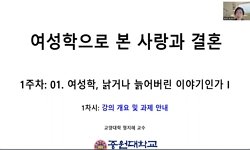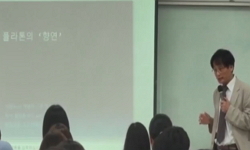본 논문은 근세 한·중·일 여류 시인의 사랑시를 비교 고찰한 것이다. 한국의 조선 중기, 중국의 명말청초 시기, 일본의 에도 시대 등 역사적으로 가까운 시기에 동아시아 삼국에서 사랑시 ...
http://chineseinput.net/에서 pinyin(병음)방식으로 중국어를 변환할 수 있습니다.
변환된 중국어를 복사하여 사용하시면 됩니다.
- 中文 을 입력하시려면 zhongwen을 입력하시고 space를누르시면됩니다.
- 北京 을 입력하시려면 beijing을 입력하시고 space를 누르시면 됩니다.

近世 韓·中·日 女流 詩人의 사랑시에 대한 ‘트랜스 동아시아적’ 접근 = A 'Trans-East Asian' Approach to Love Poetry by Modern Korean, Chinese, and Japanese Women Poets
한글로보기부가정보
국문 초록 (Abstract)
본 논문은 근세 한·중·일 여류 시인의 사랑시를 비교 고찰한 것이다. 한국의 조선 중기, 중국의 명말청초 시기, 일본의 에도 시대 등 역사적으로 가까운 시기에 동아시아 삼국에서 사랑시 창작으로 일정한 성취를 거둔 여류 시인을 두 명씩 선정해 이들의 시 세계를 살펴보았다. 남성에 비해 창작 환경이 크게 열악했던 이들 여류 시인들이 이러한 제약을 극복할 수 있었던 배경을 살펴보고, 사랑시를 통해 표출하고자 했던 정감 세계를 심도 있게 고찰하였다. 이들은 공통적으로 남성에 비해 사랑의 감정을 충실히 표현하는 특징을 보여주었다고 평가된다. ‘트랜스 동아시아’라는 시각에서 접근할 때 이들의 사랑시는 유교라는 사상과 한시라는 문학 장르의 교차점에서 제각기 특수한 개성과 여건에 따라 일률적이지 않은 다양성을 보여주었다.
다국어 초록 (Multilingual Abstract)
Heo Nansulhun's love poems, mainly expressed her longing for pure and beautiful love. She often imitated the poetry of Tang Dynasty poets. The love poems of Yi Maechang, another female poet of the Middle Joseon Dynasty, are characterized by their directness in expressing emotional states. She did not imitate Chinese poetry, but rather used common expressions. Liu Rushi's love poems often depicted the life of a traveling courtesan, trying to achieve love through an imaginary space. Another poet, Wang Wei, showed boldness in her love poems by directly expressing her love for men. Ema Saiko put a lot of her affection for Sanyo into love poems, and Sanyo coached Ema's poetry, confirming the love between them. Another female poet, Yanagawa Goran, wrote many love poems while traveling with her husband, expressing her feelings for him.
This study comprehensively examined the love poetry of Korean, Chinese, and Japanese women poets from a trans-East Asian perspective. First, we show that despite the confinement of Confucianism, Korean, Chinese, and Japanese women poets achieved certain accomplishments in creating love poems. Next, they focused on the common literary genre of Classical Chinese poetry. While all of their love poems actively embraced the literary tradition of Classical Chinese poetry, but they also exhibited a variety of personalities due to differences in status and creative environment.
In this paper we examined the love poems of female poets who were active in the three countries of Korea, China, and Japan during the same period, and analyzes the results from the perspective of “Trans East Asia.” In the modern era in East Asia, ...
In this paper we examined the love poems of female poets who were active in the three countries of Korea, China, and Japan during the same period, and analyzes the results from the perspective of “Trans East Asia.” In the modern era in East Asia, social discrimination against women in various aspects such as class and status was extremely severe. However, it is noteworthy that love poems by female poets have been transmitted in a context where literary production was almost monopolized by men.
Heo Nansulhun's love poems, mainly expressed her longing for pure and beautiful love. She often imitated the poetry of Tang Dynasty poets. The love poems of Yi Maechang, another female poet of the Middle Joseon Dynasty, are characterized by their directness in expressing emotional states. She did not imitate Chinese poetry, but rather used common expressions. Liu Rushi's love poems often depicted the life of a traveling courtesan, trying to achieve love through an imaginary space. Another poet, Wang Wei, showed boldness in her love poems by directly expressing her love for men. Ema Saiko put a lot of her affection for Sanyo into love poems, and Sanyo coached Ema's poetry, confirming the love between them. Another female poet, Yanagawa Goran, wrote many love poems while traveling with her husband, expressing her feelings for him.
This study comprehensively examined the love poetry of Korean, Chinese, and Japanese women poets from a trans-East Asian perspective. First, we show that despite the confinement of Confucianism, Korean, Chinese, and Japanese women poets achieved certain accomplishments in creating love poems. Next, they focused on the common literary genre of Classical Chinese poetry. While all of their love poems actively embraced the literary tradition of Classical Chinese poetry, but they also exhibited a variety of personalities due to differences in status and creative environment.
동일학술지(권/호) 다른 논문
-
트랜스아이덴티티 캐릭터가 창출하는 빙의물의 게임스토리텔링 메커니즘에 관한 연구 ― 드라마 <철인왕후>와 <태자비승직기>를 중심으로
- 한국중국언어문화연구회
- 김세익
- 2024
- KCI등재
-
- 한국중국언어문화연구회
- 장호득
- 2024
- KCI등재
-
韩汉建筑类词汇的隐喻和转喻对比研究——以담/벽和墙/壁的语义拓展为例
- 한국중국언어문화연구회
- 장설교(张雪姣)
- 2024
- KCI등재
-
- 한국중국언어문화연구회
- 이선희
- 2024
- KCI등재




 KCI
KCI






